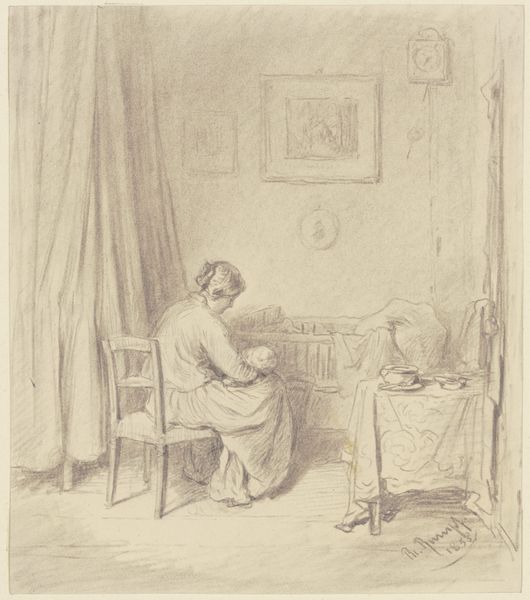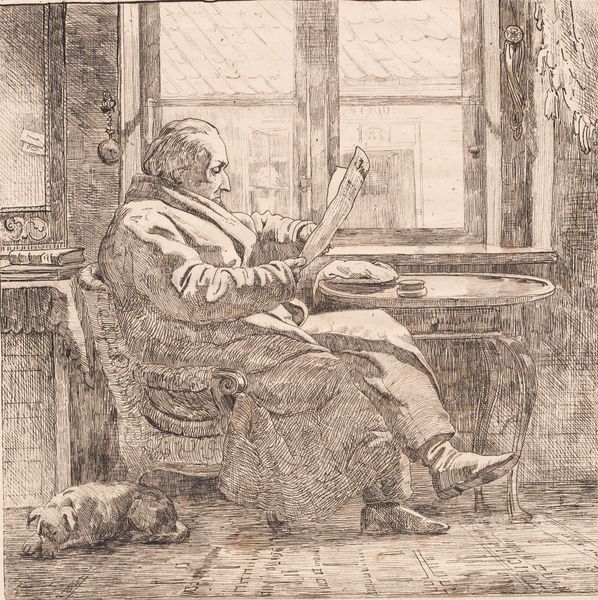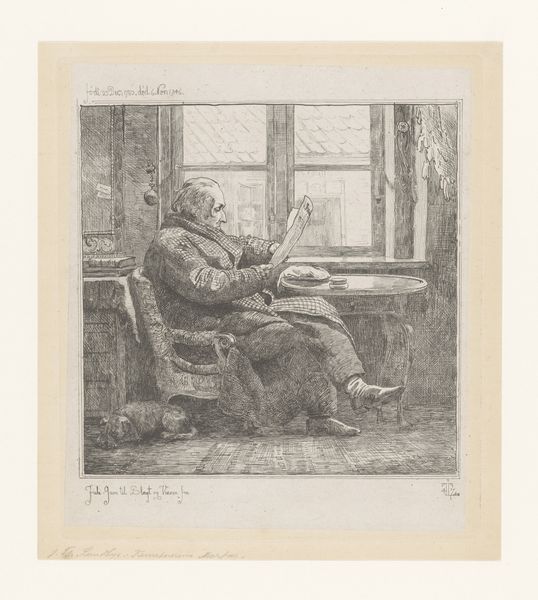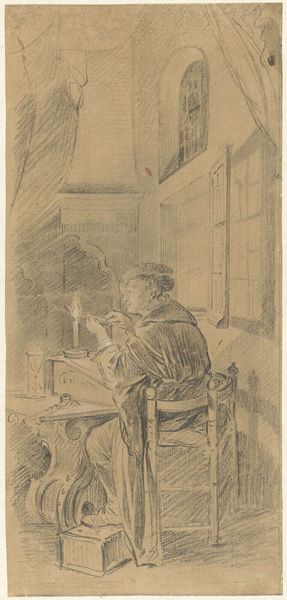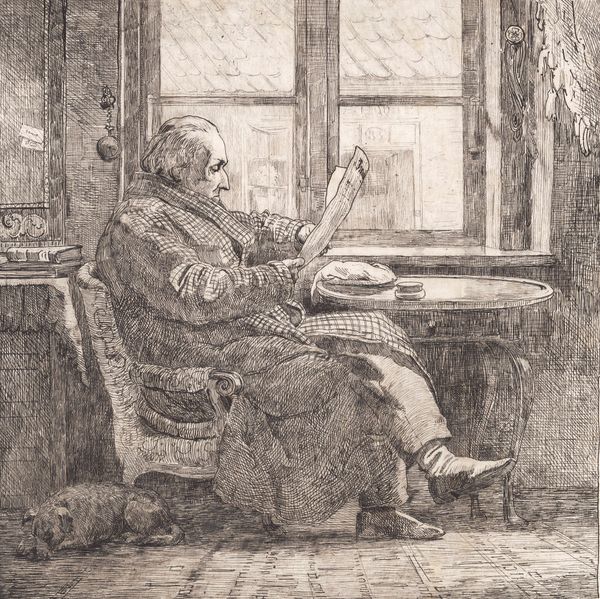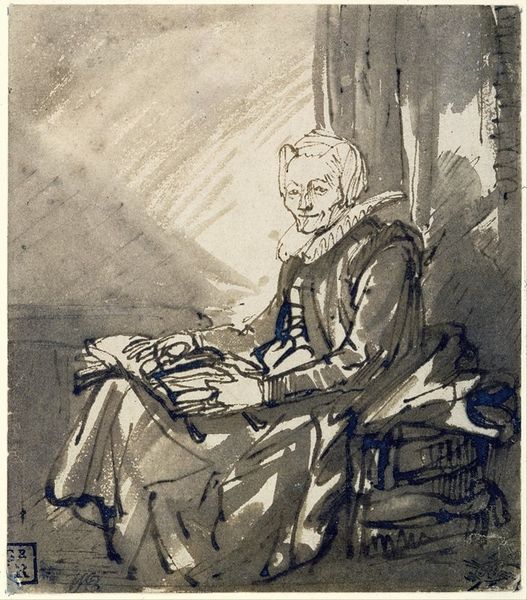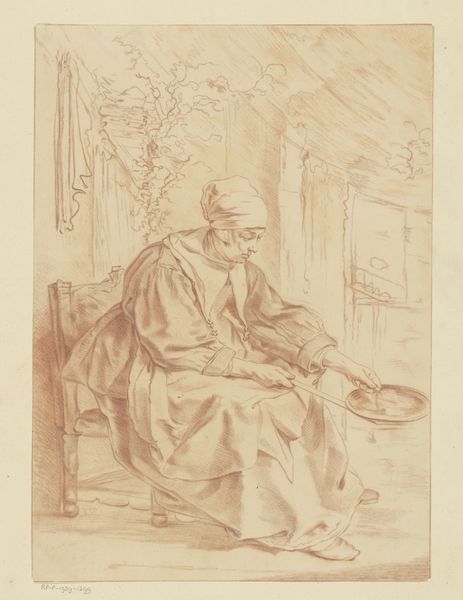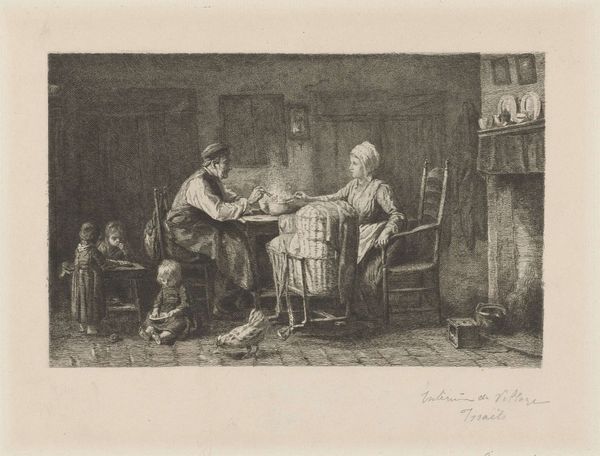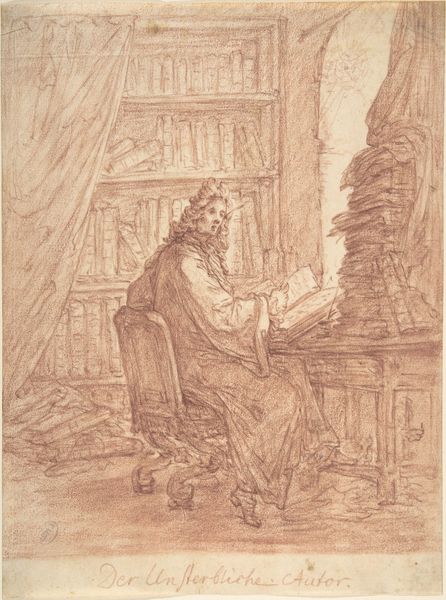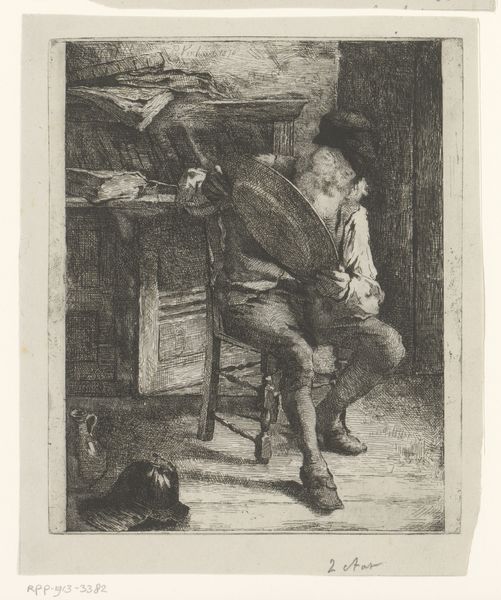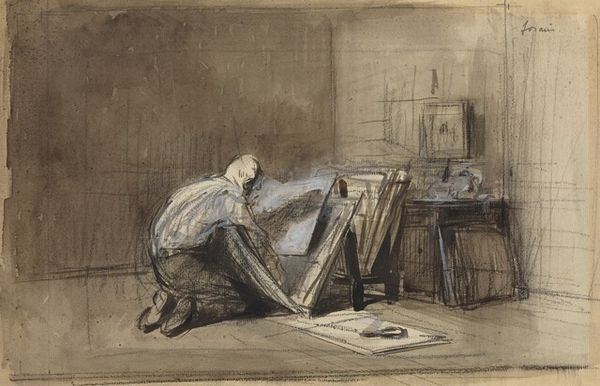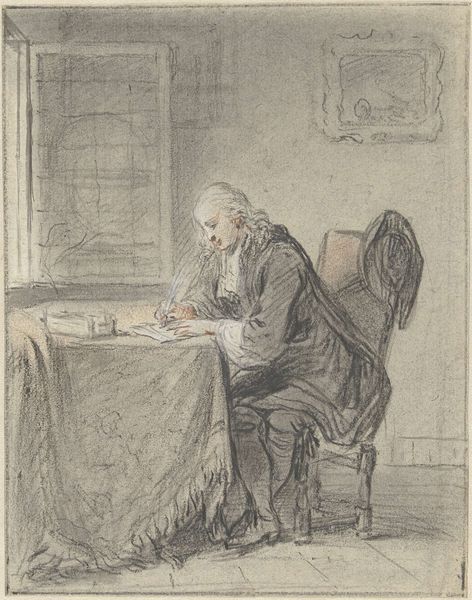
drawing, pen, charcoal
#
portrait
#
drawing
#
pencil sketch
#
charcoal drawing
#
pencil drawing
#
romanticism
#
pen
#
portrait drawing
#
genre-painting
#
charcoal
Dimensions: height 157 mm, width 149 mm
Copyright: Rijks Museum: Open Domain
Curator: Ah, I feel instantly transported into a warm, softly lit room just looking at this! There’s a feeling of quiet intimacy… a pause in the day. Editor: That’s certainly evoked in David Bles' 1850 drawing, titled "Oude man warmt zich bij de haard"—"Old man warming himself by the hearth." A genre painting rendered with pen, charcoal, and pencil; it places us squarely within a bourgeois interior and raises fascinating questions about the politics of domesticity. Curator: Yes, "domesticity" captures it well. The curve of the fireplace, echoing the curve of the chair back – it's all very comforting. Almost like a protective embrace. I feel a strange melancholy too, though. Is it the stark whiteness of his hair against the darkening background? Or the emptiness within the fireplace itself? Editor: Melancholy resonates strongly. Look at the composition itself; the somber palette emphasizes themes of aging and the quiet desperation that might come with a life lived. How is class performing here too? This is not simply "an old man," but an old man with the distinct markers of bourgeois comfort - yet something still feels off-kilter. Curator: Off-kilter... because all the outward appearances of ease cannot truly insulate one from the universal realities of life, death, the ticking clock? Maybe that's it! Look, though, at how delicately Bles renders the man's hands, palms open as if reaching for something intangible, beyond the simple heat. He captures the humanity in the scene, even while adhering to portrait conventions. Editor: And it begs the question of *who* has the privilege of leisurely warmth, the luxury to muse on intangible things. Even the act of observing such quietude – is there a tacit acknowledgement of inequality folded into our appreciation of the image? I mean, even today, doesn't this image subtly remind us about access and visibility of specific demographics in the art world? Curator: True, it can open up a whole can of socio-political discourse, can't it! I’d like to hang onto this idea that, even within unequal structures, a deeply felt moment of reflection is still available, if only momentarily, and perhaps is worth capturing… and, in turn, our empathizing with, across time and space, even with those of very different socio-economic backgrounds from my own. Editor: An important caveat, I believe, that even if that warm space is symbolic for us—that of self-reflection as resistance—we cannot forgo that recognition of structural inequities surrounding seemingly innocent portrayals of domestic bliss and our reactions to them.
Comments
No comments
Be the first to comment and join the conversation on the ultimate creative platform.
